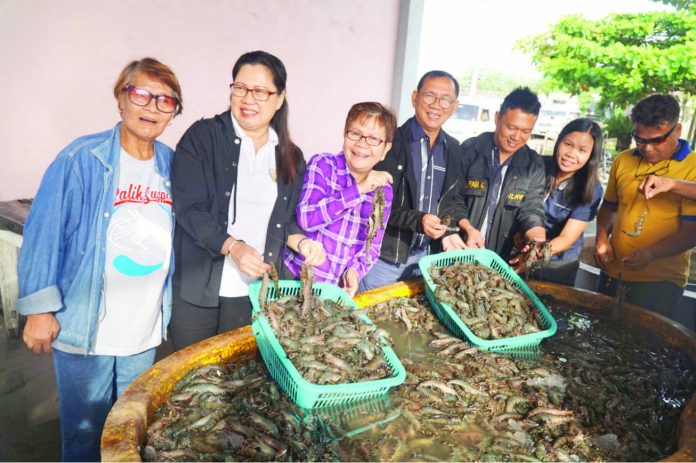
By J Genilza, RD Dianala
SUPPORT is mounting for the revival of tiger shrimp farming in the Philippines as another 4.4 tons of the prized seafood were recently harvested in Dumangas, Iloilo.
The Bureau of Fisheries and Aquatic Resources (BFAR) lauded the series of harvests by the Southeast Asian Fisheries Development Center (SEAFDEC) which hauled 2.8 tons of the shrimp, locally known as lukon or sugpo,on Oct. 28.
“Impressive, because amo gid ni ang gusto ko makita – kung ano performanceof sugpo culture,” remarked Remia Aparri, BFAR-6 regional director, who came to witness the harvest at SEAFDEC’s Dumangas Brackishwater Station on Nov. 13.
Aparri expressed support for the Oplan Balik Sugpo initiative of SEAFDEC, the banner program of its Aquaculture Department chief Dan Baliao, which aims to revive the tiger-shrimp farming in the Philippines
“The fact that it’s almost two decades that we stopped sugpo farming, this will provide information to fisherfolks, clients, local government units and to BFAR so that we can now, again, culture sugpo,” Aparri added.
The recent harvest of 4.4 tons attained a survival rate of 89.7 percent after 120 days of intensive culture in an 8,000 square meter experimental pond. In October, the survival rate was 93 percent after 113 days of semi-intensive culture in a 5,000 square meter pond.
Aparri said that while SEAFDEC is still to present the detailed culture parameters and the ROI, “if in terms of survival rate, it is really a balik sugpo program.”
The regional director also mentioned that the technology from SEAFDEC/AQD, once verified and proven effective, will be adapted by BFAR-6 to be demonstrated in their technology outreach stations in Negros and Aklan, and will be introduced to fish farmers who would wish to venture on sugpo.
The data on the cost and return analysis as well as the biosecurity measure requirements and the protocols of the operations will also be given attention.
Aparri requested SEAFDEC to continue with the culture of the shrimp to prove the consistency of the program especially that these will help BFAR towards achieving its goal to help the fisherfolks in their farming activities to contribute to the income of the region and the whole country.
According to Baliao, the recent harvests in the Dumangas facility of SEAFDEC were the last for this year but operations will continue next year to promote the revival of sugpo culture./PN



